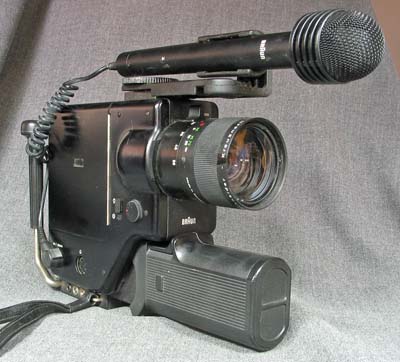 |
Launched in 1965, Super-8 film comes in plastic light-proof cartridges containing coaxial supply and take-up spools loaded with 50 feet of film. This was enough film for 2.5 minutes at the U.S. motion picture professional standard of 24 frames per second, and for 3 minutes and 20 seconds of continuous filming at 18 frames per second (upgraded from Standard 8 mm's 16 frame/s) for amateur use, for a total of approximately 3,600 frames per film cartridge. A 200-foot cartridge later became available which could be used in specifically designed cameras, but that Kodak cartridge is no longer produced. Super 8 film was typically a reversal stock. In the 1990s Pro-8 mm pioneered custom loading of several Super-8 stocks. Today Super 8 color negative film is available directly from Kodak for professional use and is typically transferred to video through the Telecine process for use in a Television advertisement, music videos, and other film projects. The Eastman Kodak Company announced the reintroduction of
|
 |
The original Super-8 film release was a silent system only, but in 1973 a sound on film version was released. The sound film had a magnetic soundtrack and came in larger cartridges than the original so as to accommodate a longer film path (required for smoothing the film movement before it reached the recording head), and a second aperture for the recording head. Sound cameras were compatible with silent cartridges, but not vice versa. Sound film was typically filmed at a speed of 18 or 24 frames per second. Kodak discontinued the production of Super 8 sound film in 1997, citing environmental regulations as the reason (the adhesive used to bond the magnetic track to the film was environmentally hazardous). |

|
|
|
In August 1974 in the USA, Eastman Kodak presented Super 8 Direct Sound System: sound recording on magnetic striped film. The cartridge that contains the sound film was longer than the silent cartridge. But the new sound cameras were compatible with both cartridges. Kodak marketed the Ektasound series and the new cartridge with 2 different emulsions: Kodachrome II Sound and Ektachrome 160 A Sound.
Kodak has also introduced several Super 8 negative stocks cut from their Vision film series, ISO 200 and ISO 500 which can be used in very low light. Kodak reformulated the emulsions for the B&W reversal stocks Plus-X (ISO 100) and Tri-X (ISO 200), in order to give them more sharpness. Many updates of film stocks are in response to the improvement of digital video technology. The growing popularity and availability of non-linear editing systems has allowed film-makers to shoot Super-8 film but edit on video, thereby avoiding much of the scratches and dust that can accrue when editing the actual film.
|
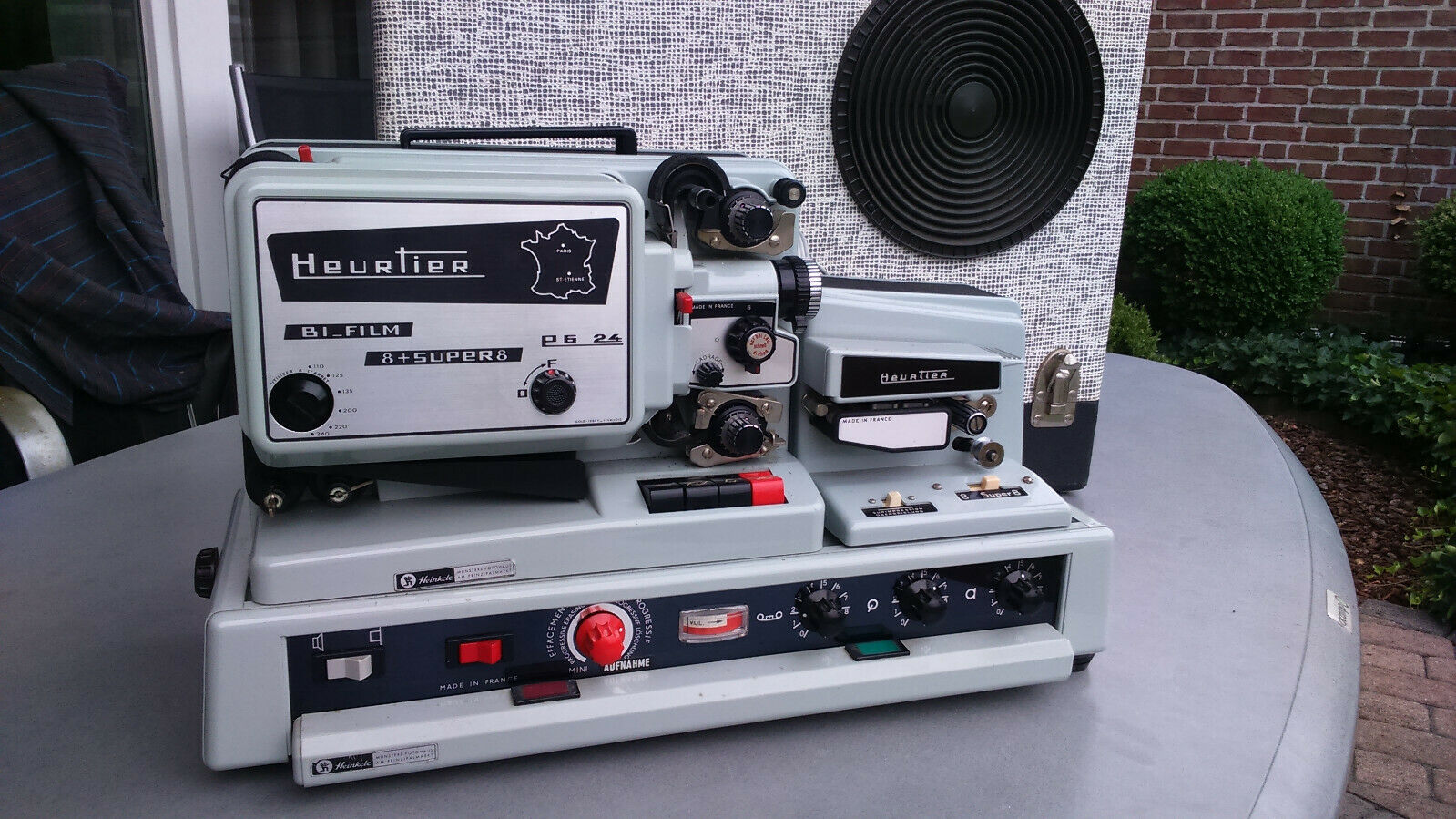
|
Lens: Som Berthiot f: 1.3 \ 17-28 mm
Lamp: 100 W, 12 V, EFP Reel capacity: 120 m Projection: forward, reverse, still Projection speed: 6, 18, 24 fps Film loading: automatic threading Sound: magnetic mono playback with an external Reader and Amplifier (Pictures below) Built-in film cutter: Motor: DC magnetic motor Power source: 110 to 240 V AC, 50/60 Hz Made in France by Heurtier
|

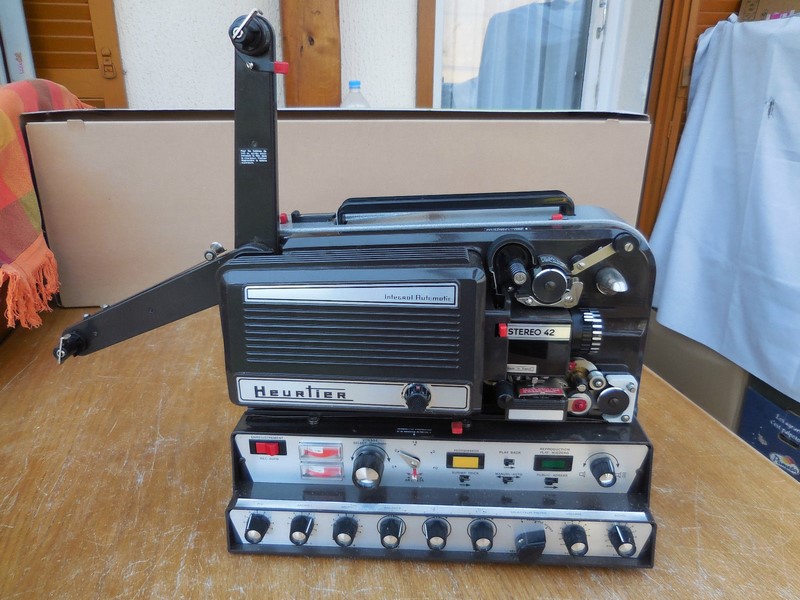
|
Lens: Schneider-Kreuznach Xenovaron f: 1.3 \ 12-30 mm
Lamp: 100 W, 12 V, EFP Reel capacity: 240 m Projection: forward, reverse Projection speed: 18, 24 fps Projection speed adjustment: +/- 1/3 frame Film loading: automatic threading Sound: magnetic playback on both soundtracks Mode: mono, duo play, stereo Amplifier: transistorized Amplifier output: 2 x 6 W (8 Ohm) Wow and flutter: less than 0.5% Recording: magnetic recording on both tracks Recording level control: auto and manual VU meter: for manual input control on the channel as recording level meters Input terminal: 2 x Microphone (R&L), Phono (R&L), Public Address Input jacks: 5-pin European DIN Output terminal: 2 x External Speaker (R&L), Auxiliary Built-in speaker: yes Built-in film cutter: yes Motor: magnetic motor Power source: AC 220V, 50/60 Hz Made in France by Heurtier |

The Stereovox comes from the famous Schneider Xenovaron variable focus lens from 12 to 30 mm, but not from 1.1, but from 1.3, technically sharper. The vúmetros, of LEDs, in 1977! They caused a sensation and were almost hypnotic.
Unlike projectors of other brands, even from later years, the Stereovox does not need an external cable to transfer the sound from one track to the other: it is achieved by simply pressing a button! THREE HEADS.
Heurtier Stereovox has three magnetic heads, Heurtier being the first brand to incorporate this candy (later, it was included in only two other devices: the Bauer 610 Microcomputer Stereo and the Stereo Beaulieu). Thanks to the third head, the machine not only manages to record with echo effect, but, even more importantly, it allows listening, as soon as it is done in a recording session, the sound mix in overprint recorded by the immediately preceding heads, for check that the sound superposition is in the correct percentage (it is a particularity that, although it will never be used, or that is currently easily achieved with a computer, for whom we value these ingenious seventies designs and we like to record the sound of the as artisanal as possible, it is an authentic delight).
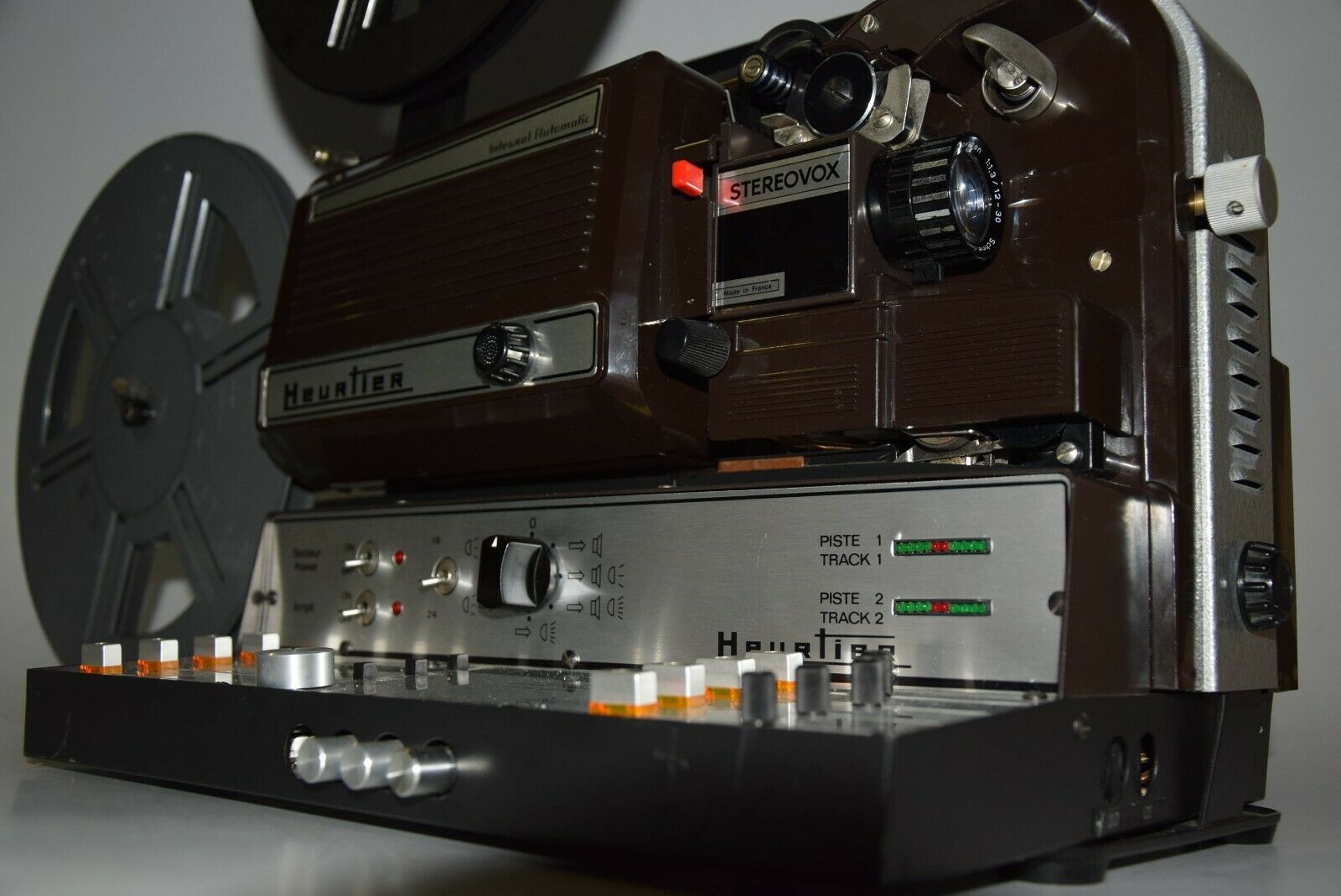
Heurtier, for those who do not know, was a French firm from the thirties and until 1981 manufactured some of the most amazing film projectors ever conceived. One day we will write about your devices (for 8, 9.5 and 16 mm), present in the collection of the Cinemateca de Galicia / IB Cinema, or the first stereophonic projector, the ST42, manufactured in 1972 !, many years that the Japanese , who got what Kodak, the inventor of the format, said was impossible: record sound on the compensation track to get the stereo in Super-8.
The family that owns Heurtier closed its factory in 1981, just before the unpredictable collapse of the super-8, because its main patents expired and could be used freely by anyone. This fate of destiny saved them from ruin.
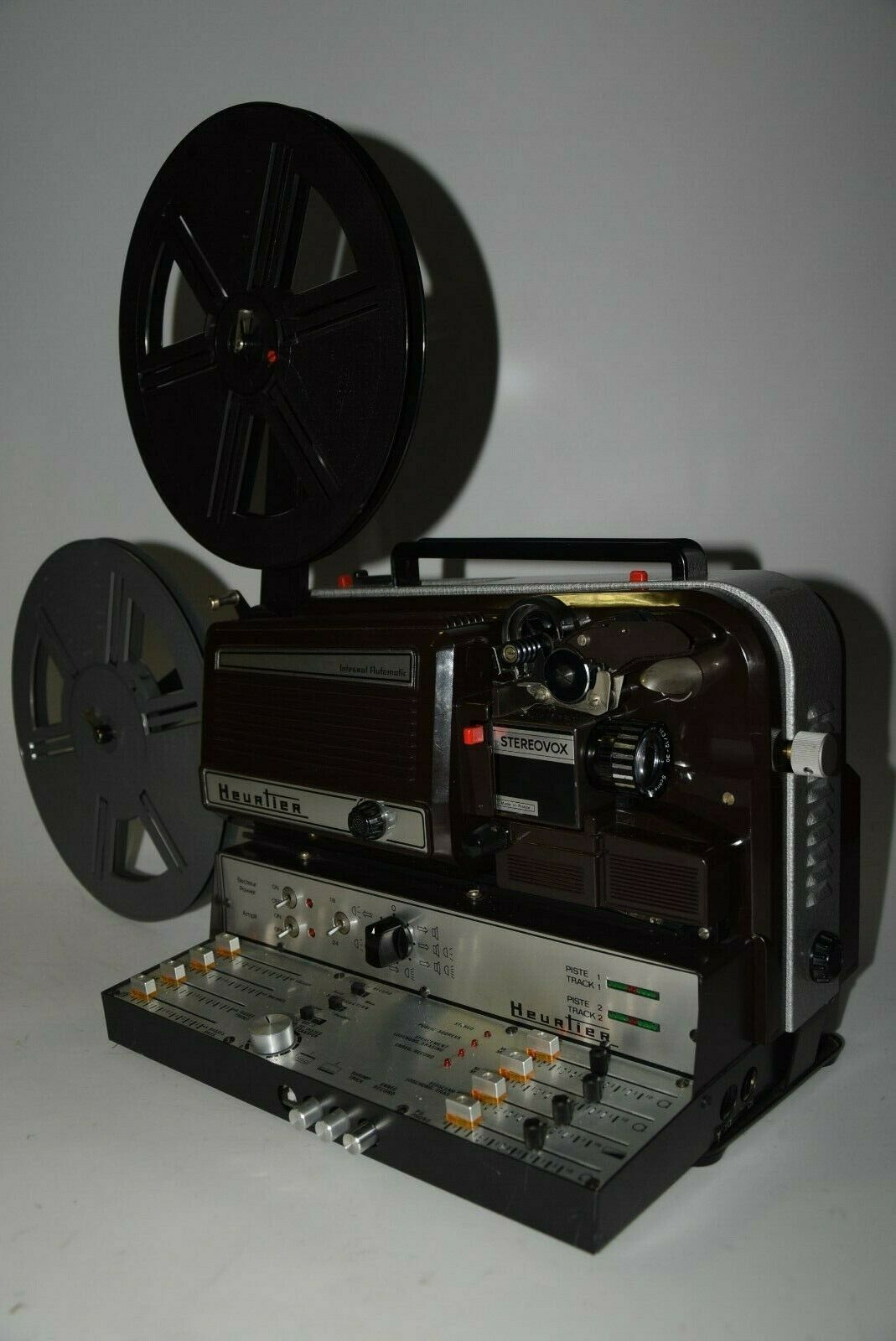
Marketed in 1976
Super 8 mm film
Lens: Schneider-Kreuznach MC Xenovaron f: 1.1 11-30 mm
Lamp: 100 W, 12 V, EFP
Reel capacity: 240 m
Projection: forward, reverse
Projection speed: 18, 24 fps
Film loading: automatic threading
Sound: magnetic playback on both sound tracks
Mode: mono, duoplay, stereo
Amplifier: transistorized
Amplifier output: 2 x 15 W
Sound controls: volume, balance, treble, bass, sound-on-sound
Recording: magnetic recording on both tracks
Input terminal: 2 x Microphone (R & L), 2 x Phono (R & L)
Input jacks: 5-pin European DIN
Output terminal: 2 x External Speaker (R & L), 2 x Auxiliary (R & L)
Built-in speacker: yes
Built-in film cutter: yes
Motor: magnetic motor
Power source: 220V AC, 50/60 Hz
Weight: circa 12kg
Made in France by Heurtier

